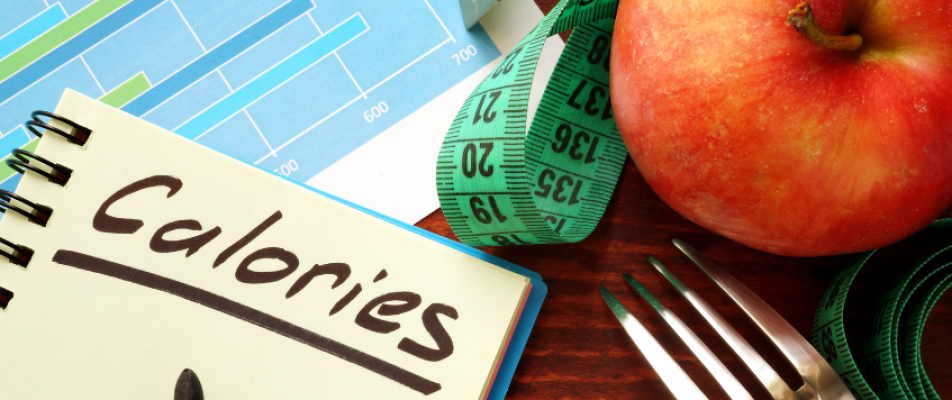
Nutrition Myth: Calories In vs. Calories Out
The complicated story behind the simplified weight loss and gain concept.
After reading yet another article about nutrition myths, I found myself thinking about how Calories In/Calories Out is still being talked about as THE important aspect in weight gain and loss. This one just keeps hanging on because it contains one kernel of truth. But, in my opinion, the concept is just too simplistic. This is a much more complicated story.
The notion of number of calories you eat needs to be less the number you expend as the only answer for weight loss is dumbing down the problem. Our bodies are complicated systems and to tackle weight loss, we need to address the issue from MANY angles to systematically put new sustainable habits into place.
In my opinion, other aspects of food matter as much or more than calories: food nutrient density, food macronutrient split, portions, food timing, emotional eating, getting to the kitchen/grocery store, habits around planning and prepping, individualized gender, age, activity level, hormone balance (stress, sex, sugar, thyroid, hunger/full), consistency, and I am sure there are more. So, while the calories and the energy they provide are important, they are only one aspect in a body system that works synergistically for weight goals. Each aspect needs to be addressed in a personalized way.
Let’s dig in.
Calories In: Nutrient Quality + Density
All food has calories–but not all foods or calories are created equal. The ‘calories in versus calories out’ model fails to take nutrient quality and density into account. Those aspects of food impact how food is used in the body, and how you feel through the day. Nutrient-dense foods benefit your health much more than nutrient-poor ones. High-quality foods, if eaten correctly for the body, should make you feel energized, full and satisfied.
For example: 100 calories of broccoli will affect your health differently than 100 calories of packaged cookies. Broccoli is real and contains lots of vitamins, minerals and phytonutrients for the body to use. Processed cookies provide anti-nutrients due to the chemicals. They hardly give the body anything positive. Processed cookies will raise the blood sugar quickly and then it will fall, potentially making you feel tired and cranky. Broccoli will keep you fuller and energized longer.
Processed fructose vs. natural fructose – both nice and sweet – act differently in the body. These two simple sugars provide the same number of calories per gram, but fructose from processed foods like packaged cookies are linked to increased blood sugar levels. Actual fruit contains natural fructose along with fiber, vitamins, minerals and phytonutrients. Again, one gives the body-building blocks and the other doesn’t give the body much at all.
Food as Information
The source of your calories affects your hunger/full hormone levels differently. Foods rich in protein and fiber keep our bodies fuller longer. For example, eating a 100-calorie serving of beans will reduce your hunger for a longer stretch than eating a 100-calorie serving of candy. The candy, which is low in fiber and protein, will not hold you for near as long as the serving of beans, so you will eat more quantity while you’re eating candy, and you’ll eat sooner after.
Portions
Nutrient density also impacts quantity of food one eats. It is well documented that the less dense a food, the more you need to eat to be full. If the plate is filled with eye-pleasing color, lots of texture and whole food, we tend to “feel” like we’re eating lots of food because we ARE eating lots of food, which makes us happy. If we eat nutrient-void processed food, the allotted calories add up quickly and we tend to overeat what is right for our bodies (read: the whole bag of chips).
Keeping Track
It’s always good to keep track of your food life to see if it’s matching what you think is happening. It is pretty eye-opening. I use MyFitnessPal personally and in client practice and have for years. I like how easily you can track food, times, water, exercise and notes against goals (in grams or percentage of the day). Some hate this. I love the personal and professional accountability. It’s a nice tool to have if accountability is an underlying issue, or you’re looking for hard nutrition data from your food to see if it matches your “calories in” expectations.
Calories Out: Metabolic Rate + Physical Activity
How do you know how many calories you should be eating? There are three things to consider. Calories are burned by basic body functioning, digestion uses 10-15% and varies based on the foods you eat (thermic effect of food) and physical activity expenditure. All three are important to consider and point back to food choices.
Basal Metabolic Rate: Is determined by age, activity level, gender, current height and weight.
Thermic Effect of Foods: A whole food meal would be more complicated to break down (fish and a salad) and your body uses more energy in digestion than it would on a processed meal (candy bar). Protein and fiber require higher amounts of energy to digest.
Physical Activity: This one is talked about a lot. I believe our activity should be chosen for our current bodies and more isn’t always better.
It’s Complicated
So, in the end, what should you focus on instead of “calories in, calories out?” Maybe what’s going well and what needs your attention?
I view this as a very individualized puzzle. Some pieces will come naturally. Others need thought and creative answers. Each person is different. Don’t get caught up in the myth that it’s easy or the answer is singular. It’s not.
We are here to help! For more guidance on meeting your personal wellness goals, book a free 20-minute consultation with Healthy Nest Nutrition owner Robin Hutchinson. See if our programs are right for you!
